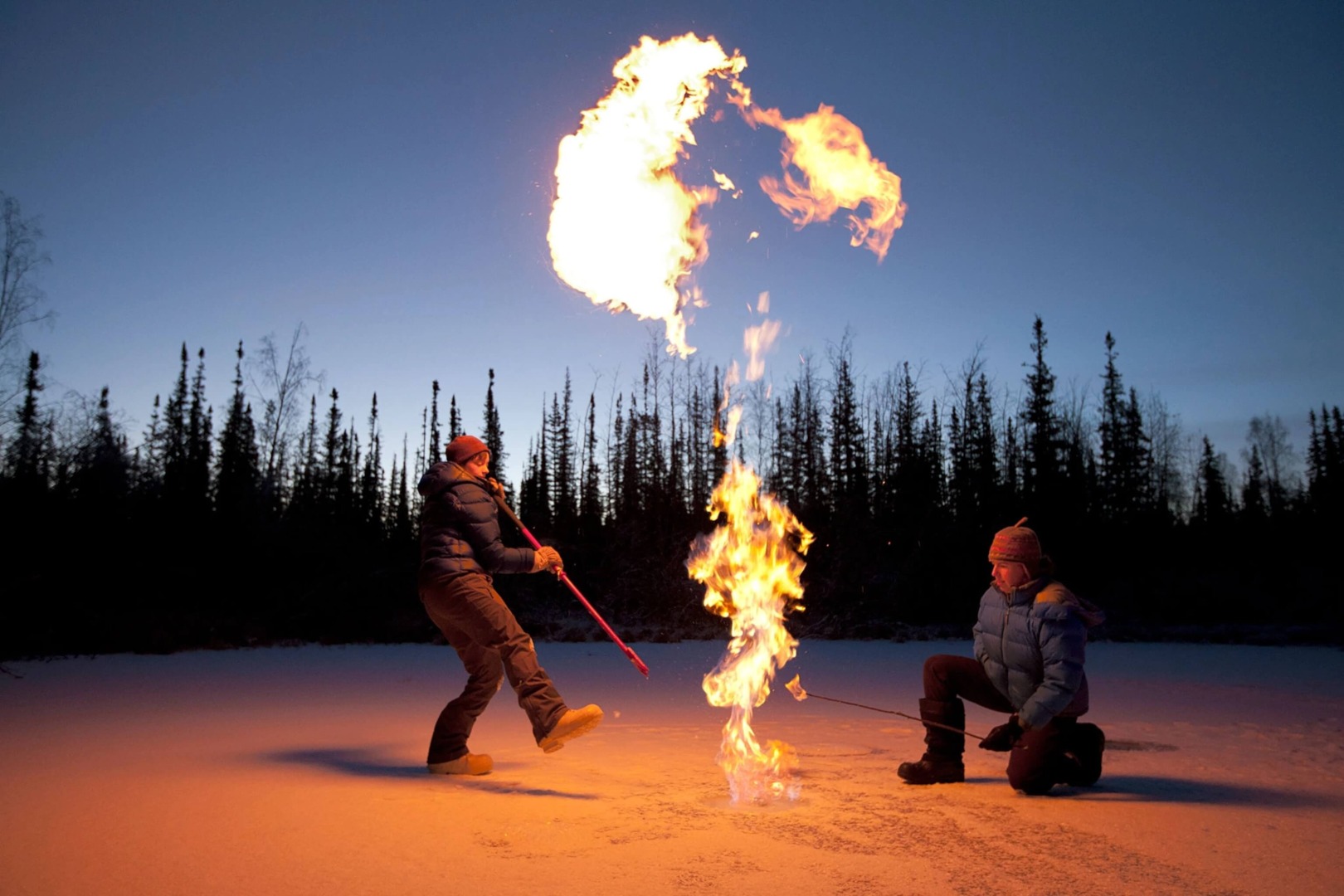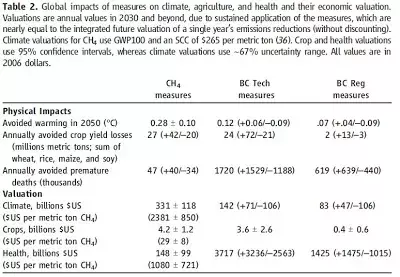Comments
- No comments found

It sometimes seems to me that the arguments over carbon emissions and the risk of climate change have crowded out attention to other environmental issues–including other types of air pollution.
Thus, I was intrigued to see the article by Drew Shindell called "Beyond CO2: The Other Agents of Influence”. Shindell focuses on the benefits of reducing soot (more formally known as ”black carbon”) and methane emissions (which are a precursor to more ozone in the atmosphere), and identifies which emissions to go after. He is reporting the results of a study with a larger group of authors in the Science magazine. I’ll quote from both articles here.
The starting point for this group was to note: ”Tropospheric ozone and black carbon (BC) are the only two agents known to cause both warming and degraded air quality.” Thus, ”an international team of researchers, including experts from the Stockholm Environment Institute, the Joint Research Centre of the European Commission, the U.S. Environmental Protection Agency, and others” looked at 400 different policies for potentially reducing these emissions.
Here’s a capsule overview of the effects of soot and methane from the Resources article:
”When the dark particles of black carbon absorb sunlight, either in the air or when they accumulate on snow and ice and reduce their reflectivity, they increase radiative forcing (a pollutant’s effect on the balance of incoming and outgoing energy in the atmosphere, and the concept behind global warming), and thus cause warming. They can also be inhaled deeply into human lungs, where they cause cardiovascular disease and lung cancer.
”Methane has a more limited effect than black carbon on human health, but it can lead to premature death from the ozone it helps form. That ozone is also bad for plants, so methane also reduces crop yields. It is a potent greenhouse gas as well, with much greater potential to cause global warming per ton emitted than CO2. But its short atmospheric lifetime—less than 10 years, versus centuries or longer for CO2—means that the climate responds quickly and dramatically to reductions. CO2 emissions, in contrast, affect the climate for centuries, but plausible reductions will hardly affect global temperatures before 2040.”
The group looked at costs and benefits to whittle down the 400 measures and eventually selected 14 of them. ”Of the 14 measures selected, 7 target methane emissions (from coal mining, oil and gas production, long-distance gas transmission, municipal waste and landfills, wastewater, livestock manure, and rice paddies). The other 7 controls target black carbon emissions from incomplete combustion and include both technical measures (for diesel vehicles, biomass stoves, brick kilns, and coke ovens) and regulatory measures (for agricultural waste burning, high-emitting vehicles, and domestic cooking and heating).”
The potential gains from the policies that they advocate are shown in this table from Science. The first column of the table shows gains from reducing methane, the second shows gains from the technical fixes for soot emissions and the third shows gains from regulatory measures for reducing soot emissions. The first few rows are physical effects: in particular, you can see that methane emissions have a bigger effect on crops, but soot emissions have a much larger effect on lives saved. The remaining rows then put monetary values on the reduction in emissions.

The Science article sums up: ”We identified 14 measures targeting methane and BC [black carbon] emissions that reduce projected global mean warming ~0.5°C by 2050. This strategy avoids 0.7 to 4.7 million annual premature deaths from outdoor air pollution and increases annual crop yields by 30 to 135 million metric tons due to ozone reductions in 2030 and beyond.” Indeed, a ”combination of measures to control black carbon, methane, and CO2 could keep global mean warming at less than 2ºC (relative to the preindustrial era) during the next 60 years—something that reducing the emissions of any one agent cannot achieve by itself.”
The authors also find that the benefits of such policies far outweigh the costs. ”Benefits of methane emissions reductions are valued at $700 to $5000 per metric ton, which is well above typical marginal abatement costs (less than $250).” For soot, ”improved efficiencies lead to a net cost savings for the brick kiln and clean-burning stove BC measures. These account for ~50% of the BC measures’ impact. The regulatory measures on high-emitting vehicles and banning of agricultural waste burning, which require primarily political rather than economic investment, account for another 25%. Hence, the bulk of the BC measures could probably be implemented with costs substantially less than the benefits given the large valuation of the health impacts.”
The policy agenda for soot and methane is daunting in practical and political terms. For example, it requires measures that affect rice paddies, fossil fuel production and transmission, animal manure, brick kilns, diesel stoves, indoor cooking, and other areas. The agenda is worldwide, and those who receive the benefits will often not align well with those who are likely to end up footing the costs. The Resources article points out that an international coalition involving Canada, Sweden, Mexico, Ghana, Bangladesh, the United States, and the United Nations Environment Programme has embarked on a program to reduce black carbon and methane emissions. The Climate and Clean Air Coalition to Reduce Short-Lived Climate Pollutants is just getting underway.
Timothy Taylor is an American economist. He is managing editor of the Journal of Economic Perspectives, a quarterly academic journal produced at Macalester College and published by the American Economic Association. Taylor received his Bachelor of Arts degree from Haverford College and a master's degree in economics from Stanford University. At Stanford, he was winner of the award for excellent teaching in a large class (more than 30 students) given by the Associated Students of Stanford University. At Minnesota, he was named a Distinguished Lecturer by the Department of Economics and voted Teacher of the Year by the master's degree students at the Hubert H. Humphrey Institute of Public Affairs. Taylor has been a guest speaker for groups of teachers of high school economics, visiting diplomats from eastern Europe, talk-radio shows, and community groups. From 1989 to 1997, Professor Taylor wrote an economics opinion column for the San Jose Mercury-News. He has published multiple lectures on economics through The Teaching Company. With Rudolph Penner and Isabel Sawhill, he is co-author of Updating America's Social Contract (2000), whose first chapter provided an early radical centrist perspective, "An Agenda for the Radical Middle". Taylor is also the author of The Instant Economist: Everything You Need to Know About How the Economy Works, published by the Penguin Group in 2012. The fourth edition of Taylor's Principles of Economics textbook was published by Textbook Media in 2017.
Leave your comments
Post comment as a guest